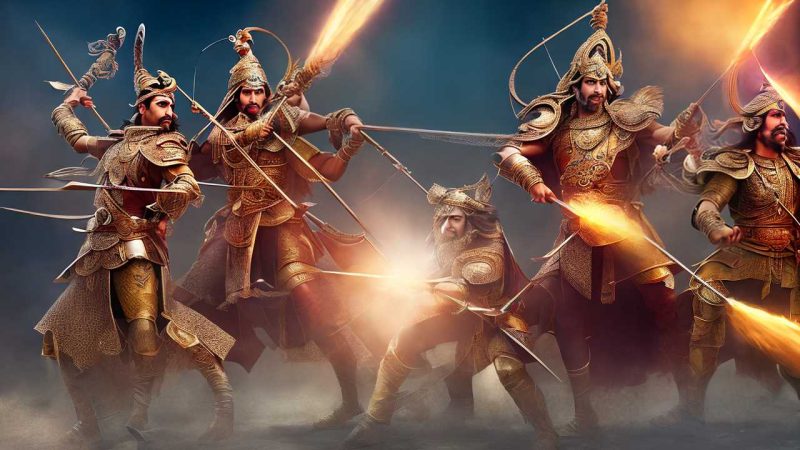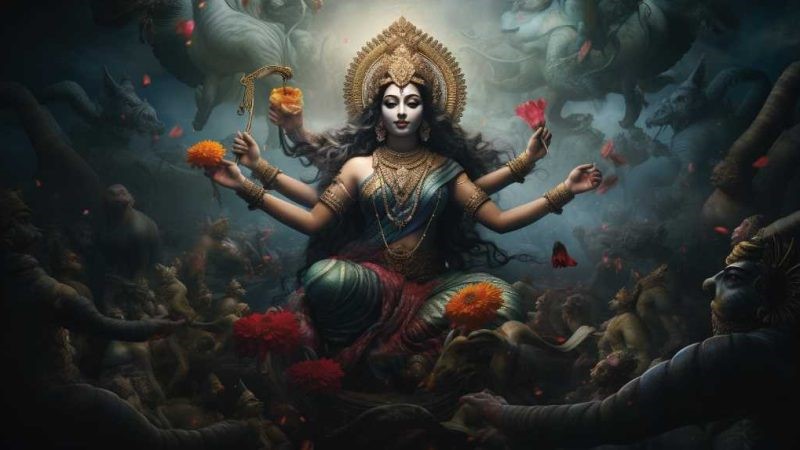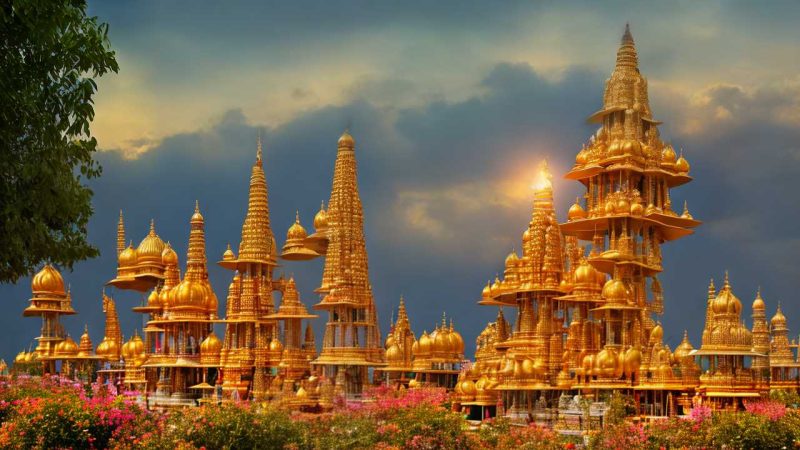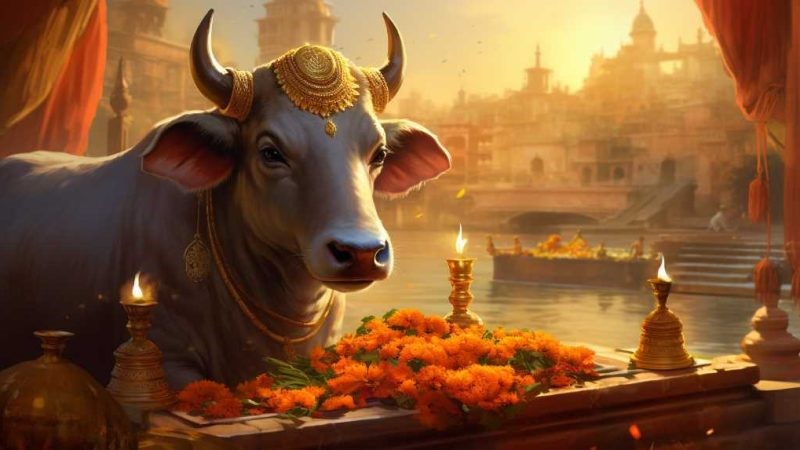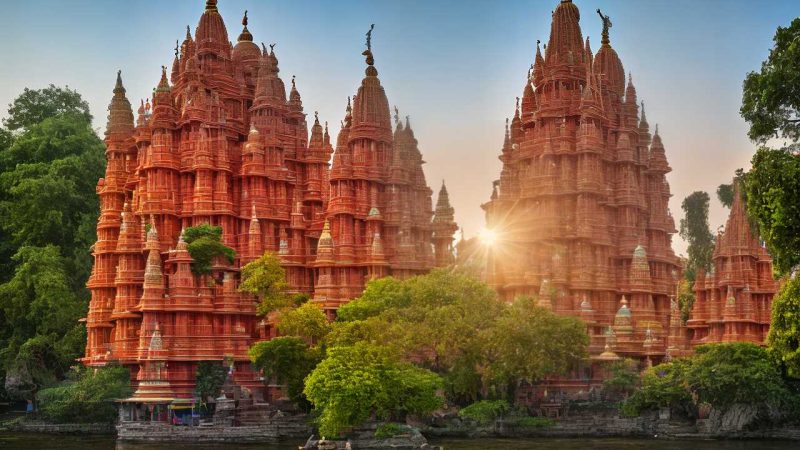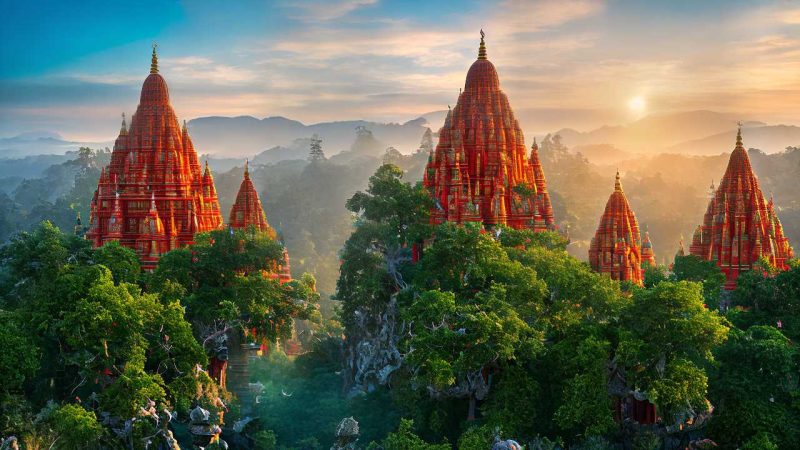The Illusion of Reality Maya in Hindu Philosophy

In Hindu thought, Maya is an important idea that questions what’s real and what’s not. It comes from old holy writings and has been talked about by wise people for a very long time. Maya is like a trick that hides the true nature of the world, making us think that what we see and touch is all there is. But this idea tells us that there’s something bigger and more lasting beyond what we experience every day.
Understanding Maya is key when we’re trying to reach Moksha, which means freedom from the cycle of life and death. It’s like trying to see through a fog – Maya prevents us from seeing clearly. When we think about how Maya affects us, it’s like looking in a mirror. We start to wonder if what we’re so sure about is actually real.
So, let’s talk about why this matters. If we’re all caught in Maya’s illusion, it means we might be missing out on something much more important. It’s like when you’re playing a video game and you’re so focused on the screen that you don’t notice someone has come into the room. In the same way, Maya keeps us focused on the physical world and we might not notice the spiritual one.
To make this a bit clearer, let’s use an example. Imagine you’re watching a magic show. The magician pulls a rabbit out of a hat. You know it’s a trick, but it looks real. Maya is like the magician’s trick – it makes us think that the world we see is the only one there is, but just like the magic trick, there’s more to it than meets the eye.
In conclusion, Maya is not just a complex idea from Hindu philosophy. It’s a reminder to look beyond what’s in front of us and to think about the bigger picture. It’s about understanding our place in the universe and the path to freedom from life’s endless cycle.
Understanding Maya’s Concept
In Hindu thought, Maya is like a magic trick that hides what’s really going on in the universe. It’s key in Advaita Vedanta, a major philosophical system. They believe Maya tricks us into seeing a world of separate things when, in truth, everything is one and connected. It’s like saying what we see and touch isn’t the full story—it’s temporary and can mislead us.
Think of Maya as a bridge. It lets us experience the vast, unseen force called Brahman in a way we can handle. To really understand Maya, we need to dive deep into big questions about life, what we see, and what everything is made of.
To give a concrete example, imagine you’re seeing a mirage in the desert. The water you see isn’t real, but it looks that way. This is similar to how Maya works—it shows us an illusion, not the actual desert. Understanding this helps us look beyond appearances to find deeper truths.
When we talk about Maya, it’s not just an abstract idea; it helps explain why we often feel disconnected in a world that is, at its core, interconnected.
Historical Context and Texts
Having explained the concept of Maya as important in Hindu philosophy, it’s important to look at where it came from and the writings that help us understand it.
The Vedas, which are very old texts key to Hindu beliefs, mention Maya, but it’s described in more detail in later writings. The Upanishads, which are a group of texts about deep questions, talk about Maya as a powerful illusion that hides the true unity of Brahman, which is the ultimate truth.
The Puranas and stories like the Mahabharata show examples of Maya by using tales and symbols. The Advaita Vedanta school, started by Adi Shankaracharya, looks closely at Maya. It sees Maya as a mysterious force that makes the world seem different from the constant truth of Brahman.
Let’s make this easier to understand. Imagine Maya as a magic trick that makes us see things that aren’t really there, hiding the real magic behind everything, which is Brahman. The Vedas give us a hint of this magic trick, but it’s the Upanishads that pull back the curtain a bit more.
Then, through exciting stories in the Puranas and the Mahabharata, we get to see Maya in action, like special effects in a movie. Finally, Adi Shankaracharya and his Advaita Vedanta school are like the movie critics who go deep into how the special effects work, telling us that these effects are cool but reminding us not to forget about the real story, which is Brahman.
Perception Versus Reality
In Hindu thinking, there’s a concept called Maya. It says that the world we see and touch isn’t really the full truth. What we see is like a trick, hiding the real thing from us. We think we know the world through our eyes, ears, and hands, but that’s not the whole picture. Our feelings and senses can’t catch everything, so what we think is real is actually missing a lot and always changing.
Why does this matter? Well, for someone trying to grow spiritually, it’s a big deal. They need to see past this illusion of Maya. They’re trying to connect with something called Brahman. Imagine Brahman as the truest, most real thing there is. It’s like the power source for everything and what everything is really made of.
Maya’s Role in Liberation
In Hindu teachings, understanding Maya is key to finding freedom from the cycle of life and death. Maya is like a curtain of illusion that hides the truth, and we need to see past it to be free, a state called moksha. Maya isn’t just a trick; it’s a part of our world that challenges us to find the unchanging truth.
Being free means discovering who we really are, beyond Maya’s tricks. When we realize that our soul (Atman) is one with the ultimate truth (Brahman), we break down the false separation between ourselves and the world. This brings us to a place of true freedom and wisdom, which is what moksha is all about.
Let’s make this simpler. Think of Maya as a test in a video game, and moksha is like reaching the final level where you’ve learned everything the game is trying to teach you. You realize that you and the game’s world aren’t separate; you’re a part of it. This is like understanding that you’re connected to a bigger truth in life.
And just like finishing a game gives you a sense of accomplishment, getting past Maya gives you the ultimate peace and knowledge.
Practical Implications Today
Understanding the ancient idea of Maya, which is central to Hindu thought, helps us ask how it fits into our lives today. We live in a time where technology grows quickly and many people care a lot about owning things. Thinking about what’s real and what’s not can really change how we see the world and ourselves.
When we look closely at Maya, it can show us why people act the way they do, and it can make us question what we think is important. On a bigger scale, the idea of Maya questions our social and economic systems and our focus on making money, which could lead us to value spiritual things more. This idea is especially interesting now because we use so much technology and sometimes can’t tell what’s real from what’s not.
For example, when we think about how much time we spend online, Maya makes us ask if our online lives are as important as what we do in the real world. This could make someone decide to spend more time with family and friends in person, rather than focusing on social media. In business, a company might look at Maya and choose to focus on creating real value in their products or services, rather than just making money.
In short, Maya encourages us to look at our lives and society with a critical eye. It asks us to think about what we truly value and whether we’re living in a way that’s good for our inner selves. This can lead to a more fulfilling life, where we’re not just chasing after things because everyone else is.
Conclusion
The idea of Maya in Hindu philosophy helps us see the difference between what we think is real and the deeper truth. This concept isn’t new; it’s been in important texts for a long time. It teaches us about life and how we can free ourselves from things that hold us back.
Nowadays, Maya makes us question what we go through every day and pushes us towards a deeper understanding of ourselves, which is still very important. For example, when we see something on social media that makes us feel bad about our own lives, Maya reminds us that this isn’t the whole truth—it’s just a small part of someone else’s life, not the full picture.
By understanding Maya, we can learn to look past these illusions and find a more meaningful way to live. This journey to finding out who we really are is called self-realization.

